News |
Today is the 160th anniversary of great French humanist Louis Dartige du Fournet
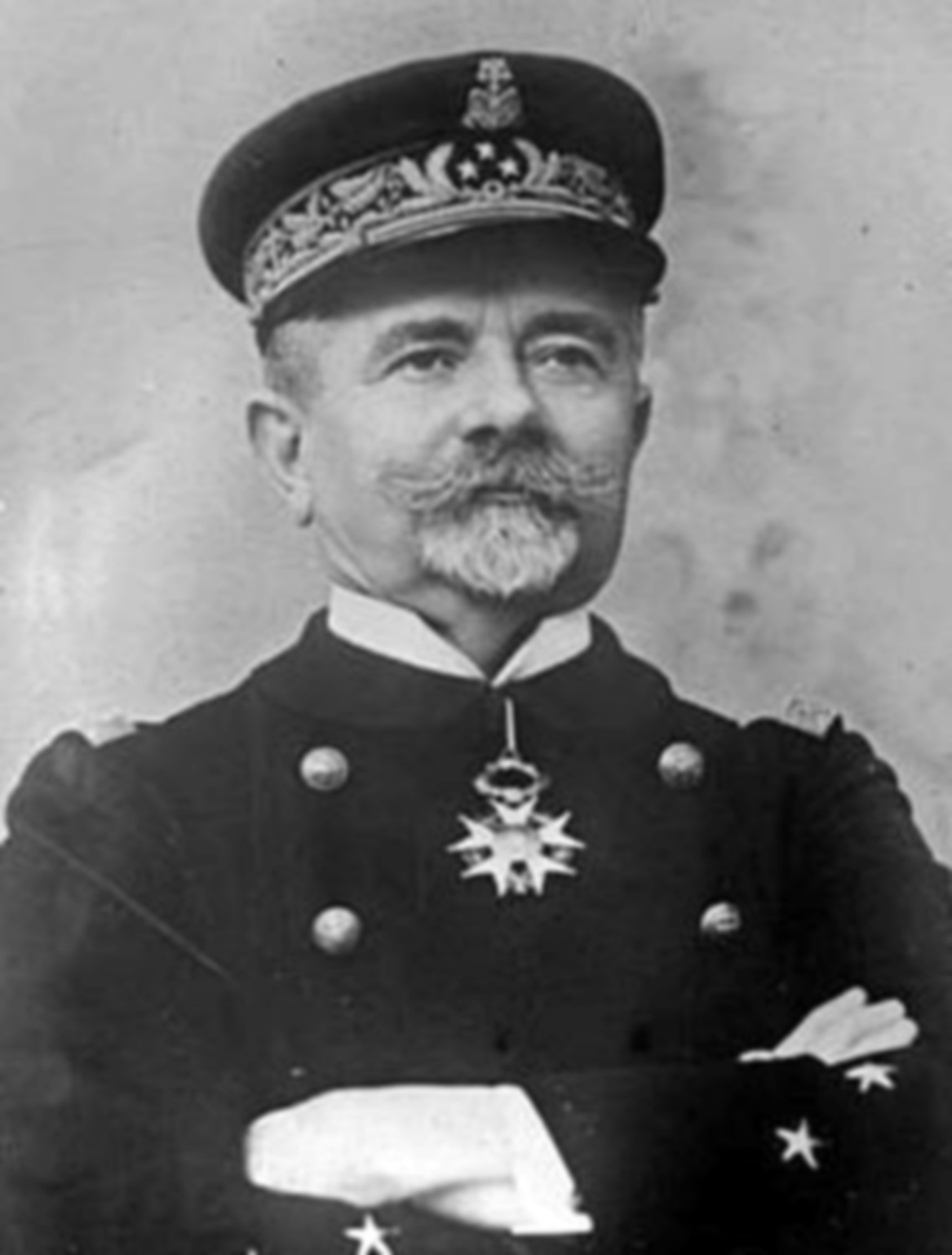 Louis Dartige du Fournet
Louis Dartige du Fournet
(1856-1940)
Louis Dartige du Fournet was born on March 2, 1856, in the North –West of France, in the district of Orni in Normandy. Later, he added “du Fournet” aristocratic surname of his paternal grandmother to his last name.
During his military service, he reached from a degree of Naval Officer to Vice-Admiral. In 1872 he entered to the Naval Academy. During 1893 Siam’s campaign he was a commander of “La Comete” frigate. He actively participated in liberation of Bangkok’s port, as a result of which France got the left bank of Mekong (Laos). He was an assistant to “Pothuau” armored cruiser captain, and then led the “Surcouf”cruiser of North squadron.
In 1909 he was appointed as a Counter Admiral. In 1912-1913 Louis du Fournet participated in the Balkan wars, leading the French Navy, and afterwards was appointed as a Vice –Admiral.
During World War I he was appointed as a Vice-Admiral of the French Eastern fleet, which blockaded Turkish coasts in Syria in August, 1915.
In December, 1915 after the organized trap in Athens, the Vice-Admiral was dismissed by the French Marine minister Lucienne Lakaz, thus ending his military service. At the end of the World War I he tried to enter the continental squad.
He had no heir and after being dismissed, he married a widow; they lived in the South-West district of France, in a modest home not far from San-Shamasi village. He died on February 16, 1940, and was buried in San-Shamasi village.
During his life Dartige du Fournet published several memoirs: ''War memoirs of an admiral'' (1914-1916), (Paris, 1920) is the most valuable for us.
He devoted a separate chapter to the heroic episode of Musa Dagh defense and presented details about how he had helped 4080 Armenians to escape a danger of massacre and moved them to Port Said.
Excerpt from memoirs of Louis Dartige du Fournet: '' In the first days of September ''Gishen'' cruiser commanded by Captain de Fregat Brison was moving along the seaside of Antioch when he noticed signals from land. A boat was sent and it turned out that the Armenians situated in the heights of Mount Moses (Musa Ler) are under the threat of massacre by Turks. On September 6, I received a telegram about this and immediately went there with ''Joan of Arc''. One of the Armenian leaders Pierre (Petros) Tmlakyan came to the ship and asked to move non-fighters (women, the aged and children) to another place… I understood that I should help those unfortunates. There was very little time and no matter what they said, there was a need to transport everyone. I telegraphed to Admiralty about the problem. All ships at our disposal have been sent there and Armenians were on the board on September 13. The transportation was carried out without incident. Among them were poor babies wrapped in towels. Little inhabitants of Musa Dagh were passed from hand to hand over the surf waves, who were actually saved from drowning and who, in fact, will never know from which dangers they were saved''.
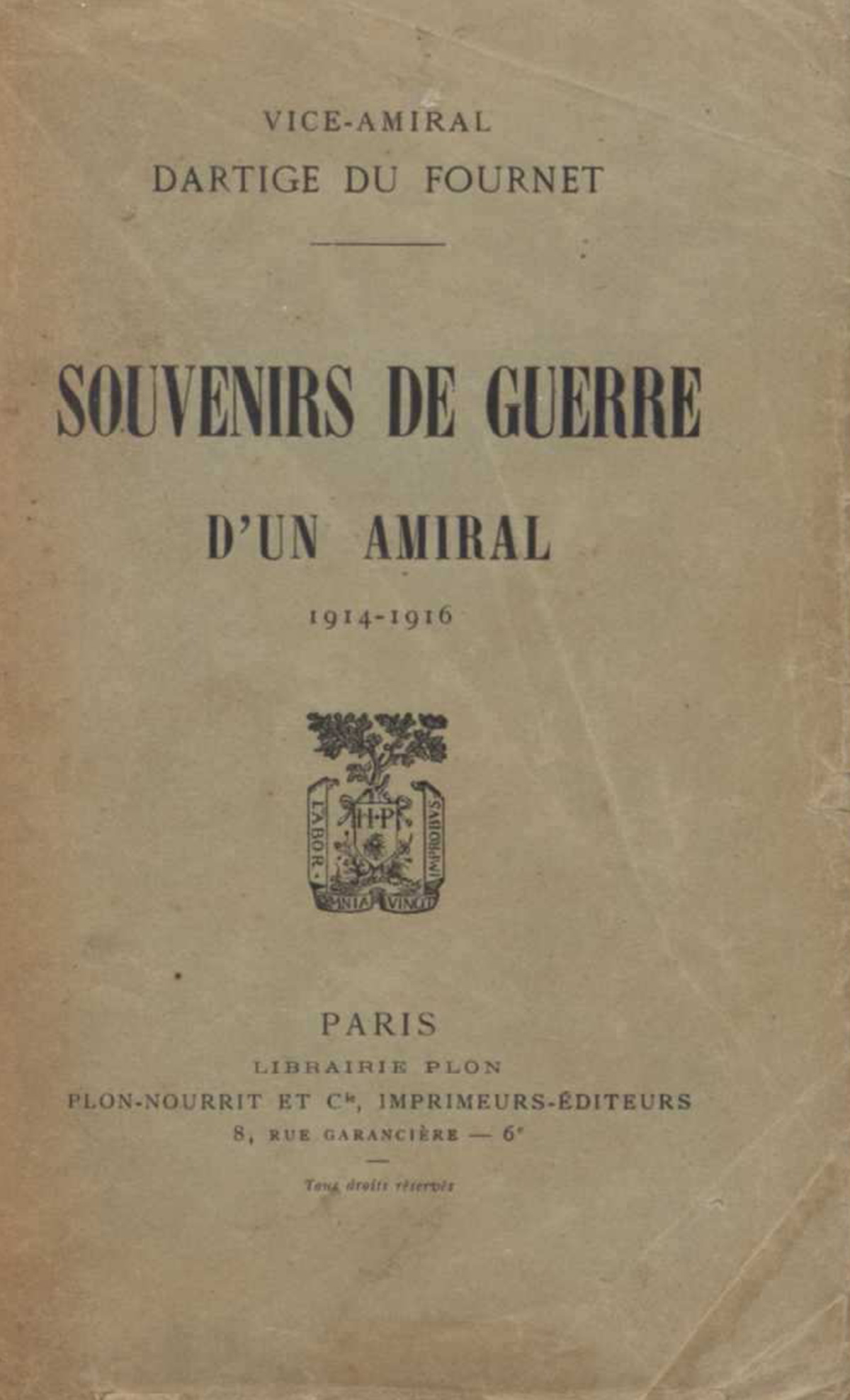 Dartige du Fournet, ''War memoirs of an admiral'' (1914-1916), (Paris, 1920)
Dartige du Fournet, ''War memoirs of an admiral'' (1914-1916), (Paris, 1920)
In spring of 1915, Armenians of Svedia learned about deportation of Armenians in neighboring provinces. On July 29, during the counsel of the representatives of six Armenian villages (Kabusia (Kaboussieh), Vakef, KheterBey (KhodrBey), Yoghunoluk, Bitias and Haji Habibli) surrounding Musaler (Musa-Dagh or Movses' Mountain is situated in the former province of Aleppo, in the province of Antioch near the settlement of Svedia (Suyediya)) it was decided not to obey the order of compulsory deportation and organize self-defense on the Mount Musa.
On July 30, 1915, the Armenians of the region were ordered to leave their settlements and exile. Some part of Armenians, obeying the order of Turks, left the native land and was slaughtered on the way, while the other part - about five thousand Armenians, generally women and children- climbed up the Mount Musa with the hop to survive and joined the self-defense preparations.
A special military body consisting of only 600 fighters with a limited number of weapon and ammunition was established under the leadership of Yesayi Yaghubian. Under very strict military discipline, self-defensive base stations and fortifications were constructed in different parts of the Mount.
Starting from August 7, Turks initiated several attacks. Despite fierce resistance of the Armenians, their situation was becoming heavier: food and ammunition were about to end. Heads of self-defense lifted two flags made of sheets on the top of the mountain as a signal of help, hoping for support from warships of the allies. There was a red cross on one flag and an inscription "Christians in Distress" on the other.
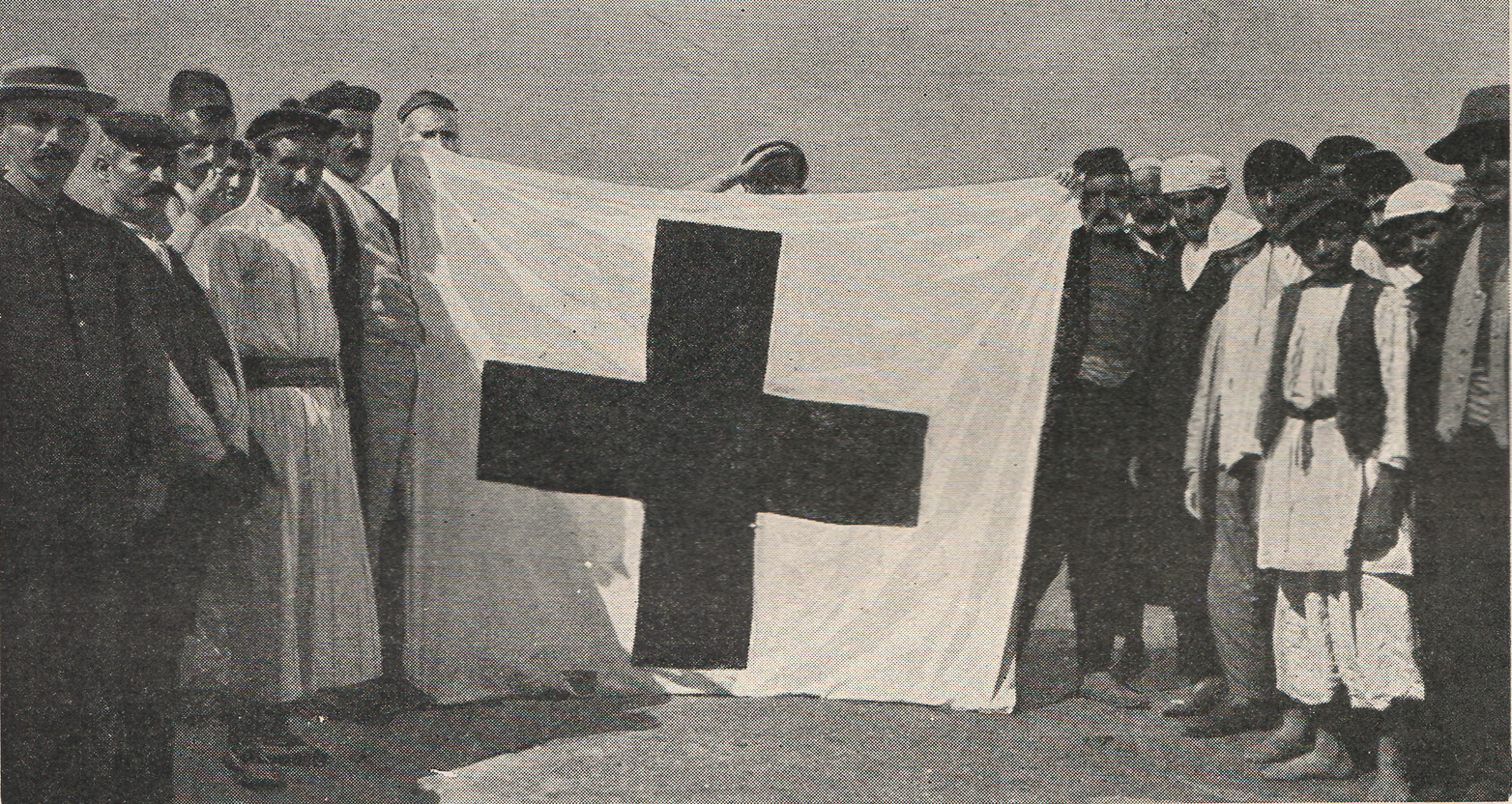 People of Musaler, holding the flag of salvation with a red cross, 1915
People of Musaler, holding the flag of salvation with a red cross, 1915
They burned fire around the flags to draw attention of the ships.
On September 5, the French cruiser "Guishen" appeared in the sea. It sent a boat to the coast for clearing out the situation. Petros Tmlakian, one of the self-defense leaders, approaching the cruiser, explained the situation to the crew and convinced them to bombard the Turkish positions in order to raise a panic among the Turks. The command of warship left with the promise to help the Armenians.
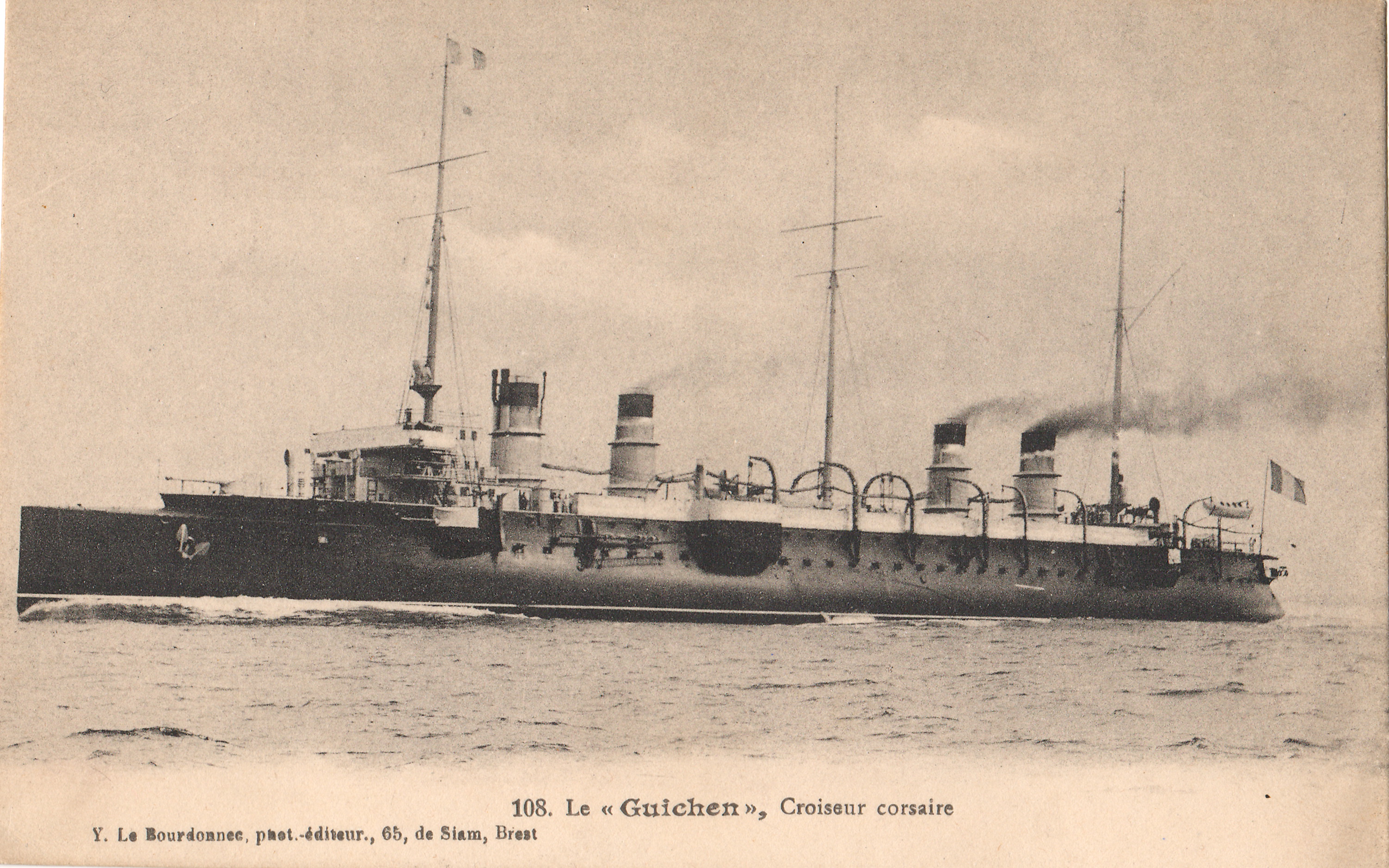 The French cruiser "Guishen" (postal card)
The French cruiser "Guishen" (postal card)
 Petros Tmlakian on the board of French "Guishen" warship, September, 1915
Petros Tmlakian on the board of French "Guishen" warship, September, 1915
This was reported to Admiral du Fournet. The latter, realizing the seriousness of the situation, immediately sent a telegram to France. However, being familiar with French long-paper work, he made a decision to send cruisers at his disposal to Musa Dagh and transport all people. At the same time he asked the authorities of Cyprus to provide place to the people of Musa Dagh, but received negative answer. Then he applied to the French and British officials in Egypt and convinced them to prepare camps in Port Said for 4080 inhabitants of Musa Dagh.
On September 10, on the 41st day of the heroic fight, two French warships appeared in the sea and started bombarding the positions of Turks. Then, Dartige du Fournet under his personal responsibility ordered to transport people to Egypt's Port Said. Women, children and old men were the first to get on the ships, and then followed by the self-defense forces. On September 13-15, the French ship of "Jeanne d’Arc" and other warships moved in to transport the heroes of Musa Dagh and disembarked them to Port Said where the camp of Musaler fighters was founded. In those difficult days children were born who got names symbolizing freedom and salvation. Even some children were called Gishen in honor of the French warship.
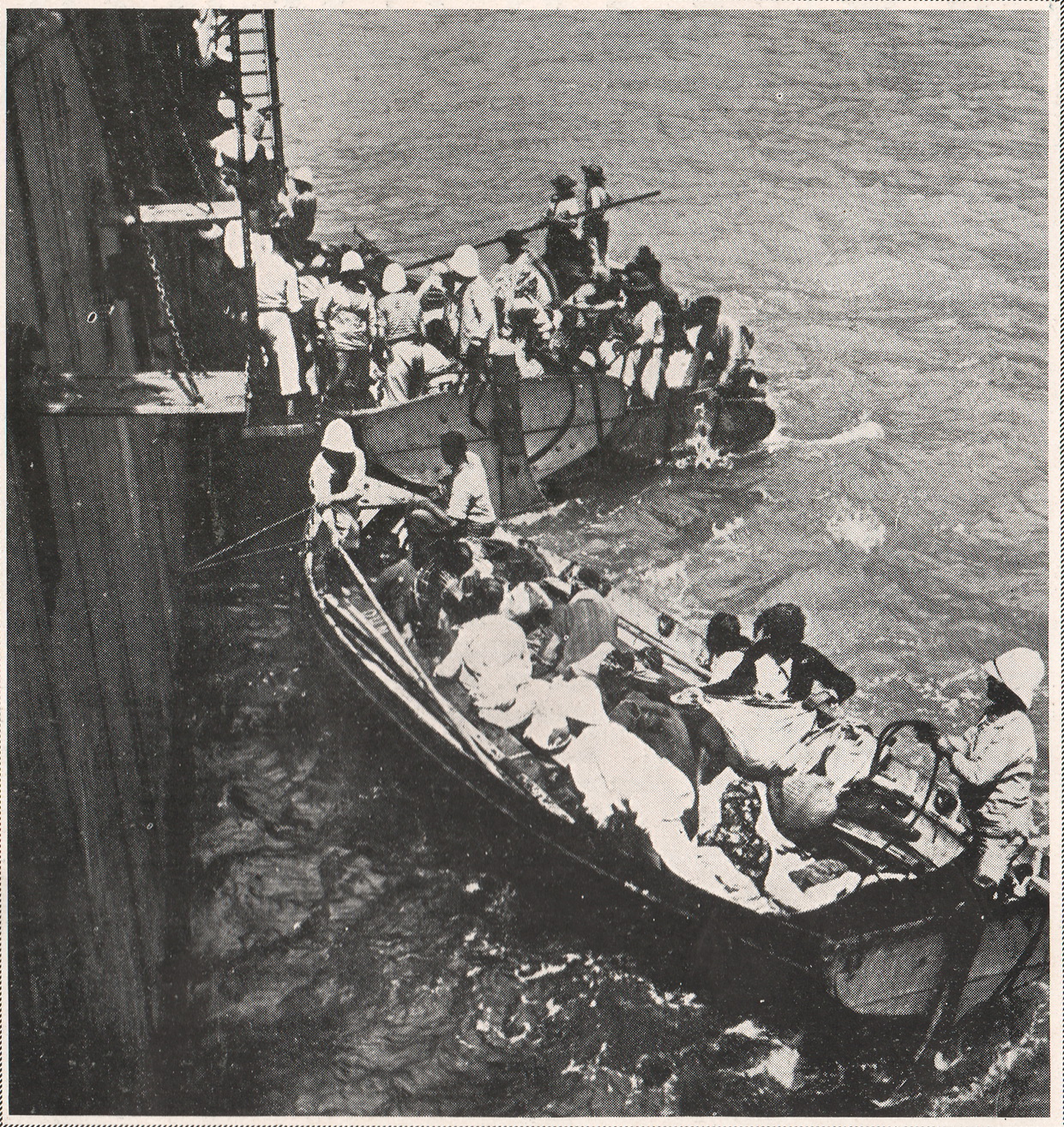 Armenian refugees of Musaler getting on board the French warship, September, 1915
Armenian refugees of Musaler getting on board the French warship, September, 1915
 Armenian refugees of Musaler on the board of French warship, September, 1915
Armenian refugees of Musaler on the board of French warship, September, 1915
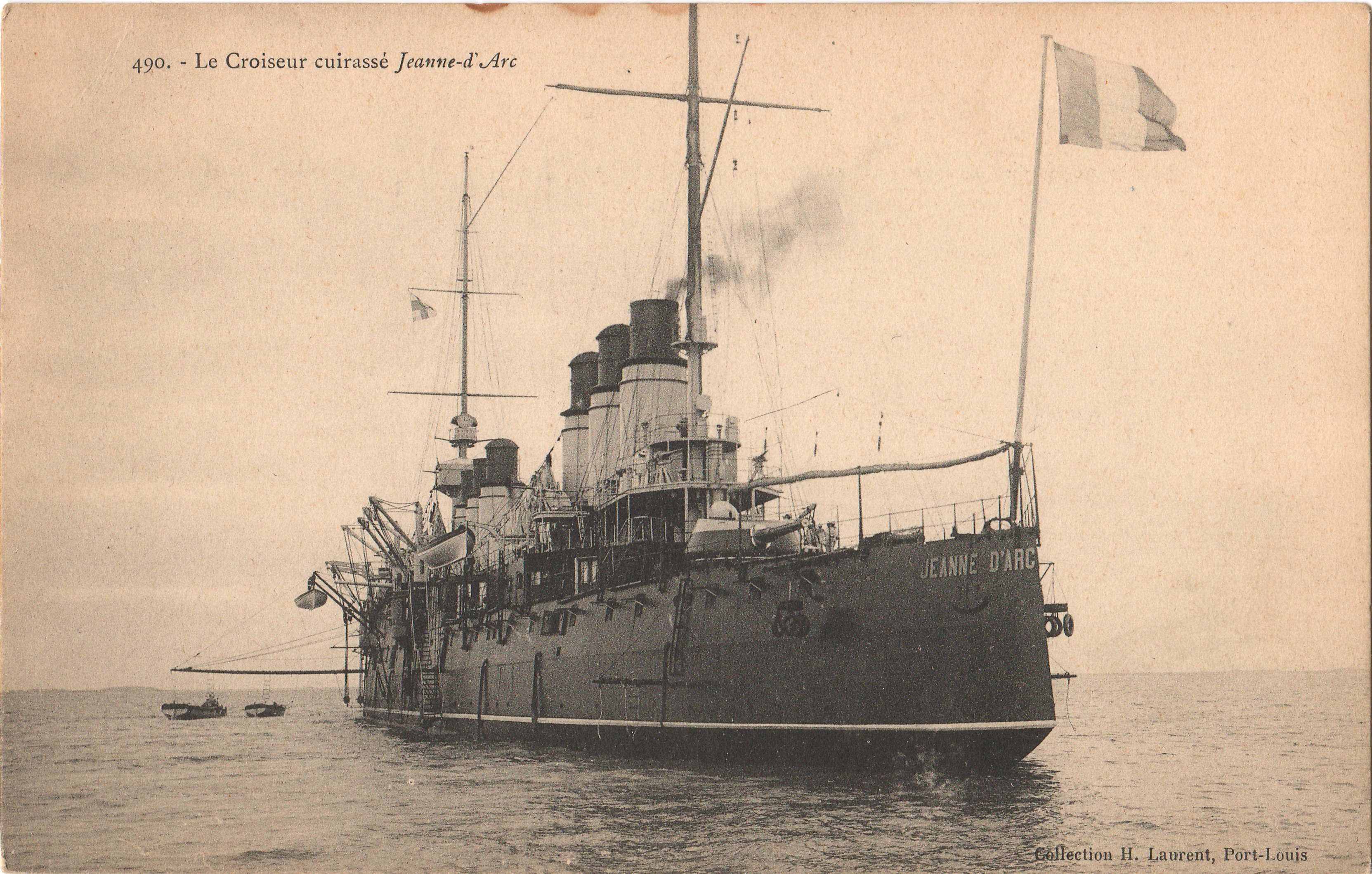 The French cruiser "Jeanne d’Arc" (postal card)
The French cruiser "Jeanne d’Arc" (postal card)
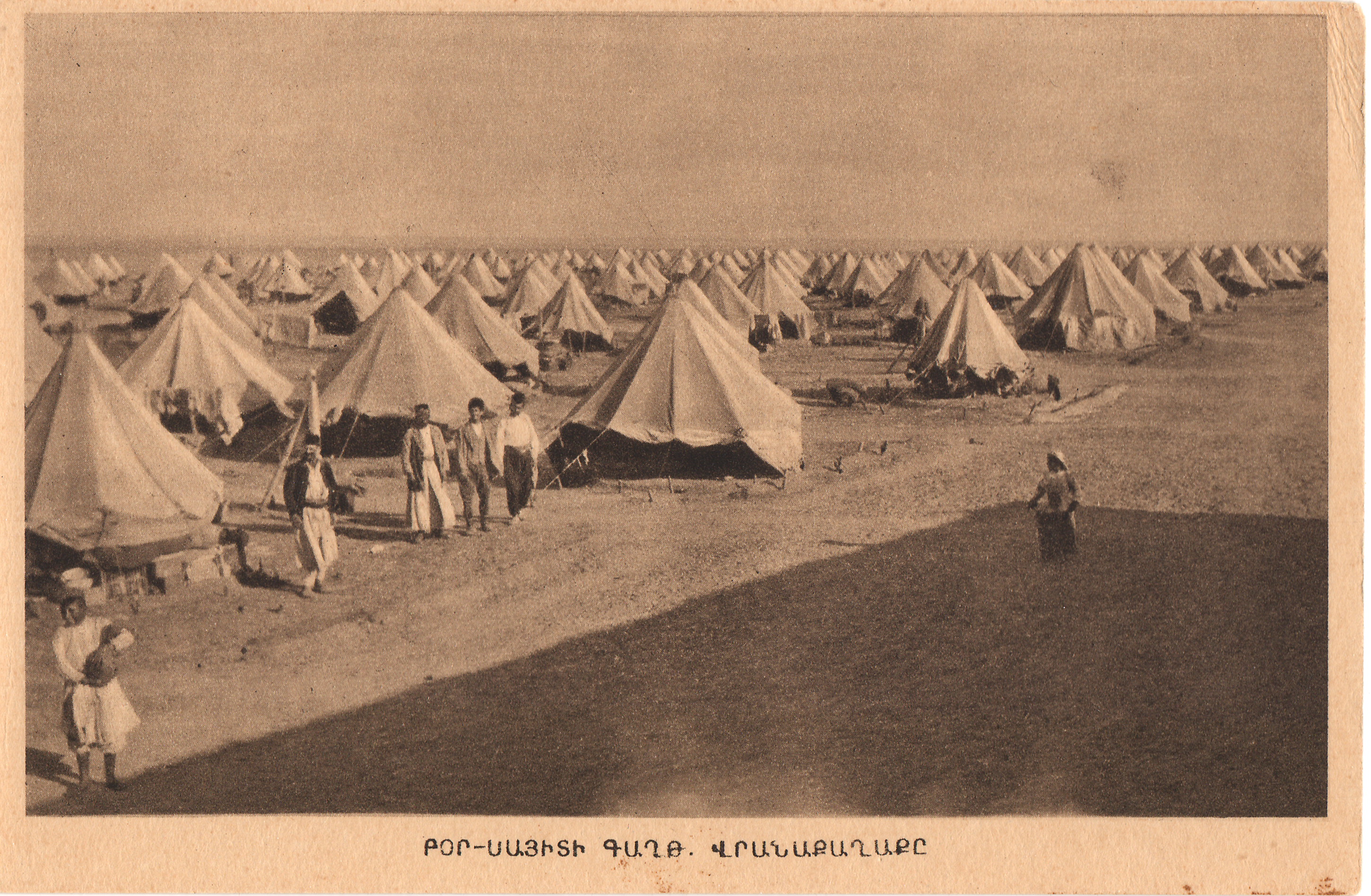 Armenian refugees of Musaler in a camp town of Port Said, 1915
Armenian refugees of Musaler in a camp town of Port Said, 1915
Only three months letter a telegram came from France, asking ''Du se trouve mont Moise'' (where is Mount Moses located?). So, if Dartige du Fournet didn’t follow his voice of conscience and was governed by military laws, no one from Musa Dagh would have been saved. Armenians remember the great French humanist with gratitude.
Seda Parsamyan
|
|
DONATE |
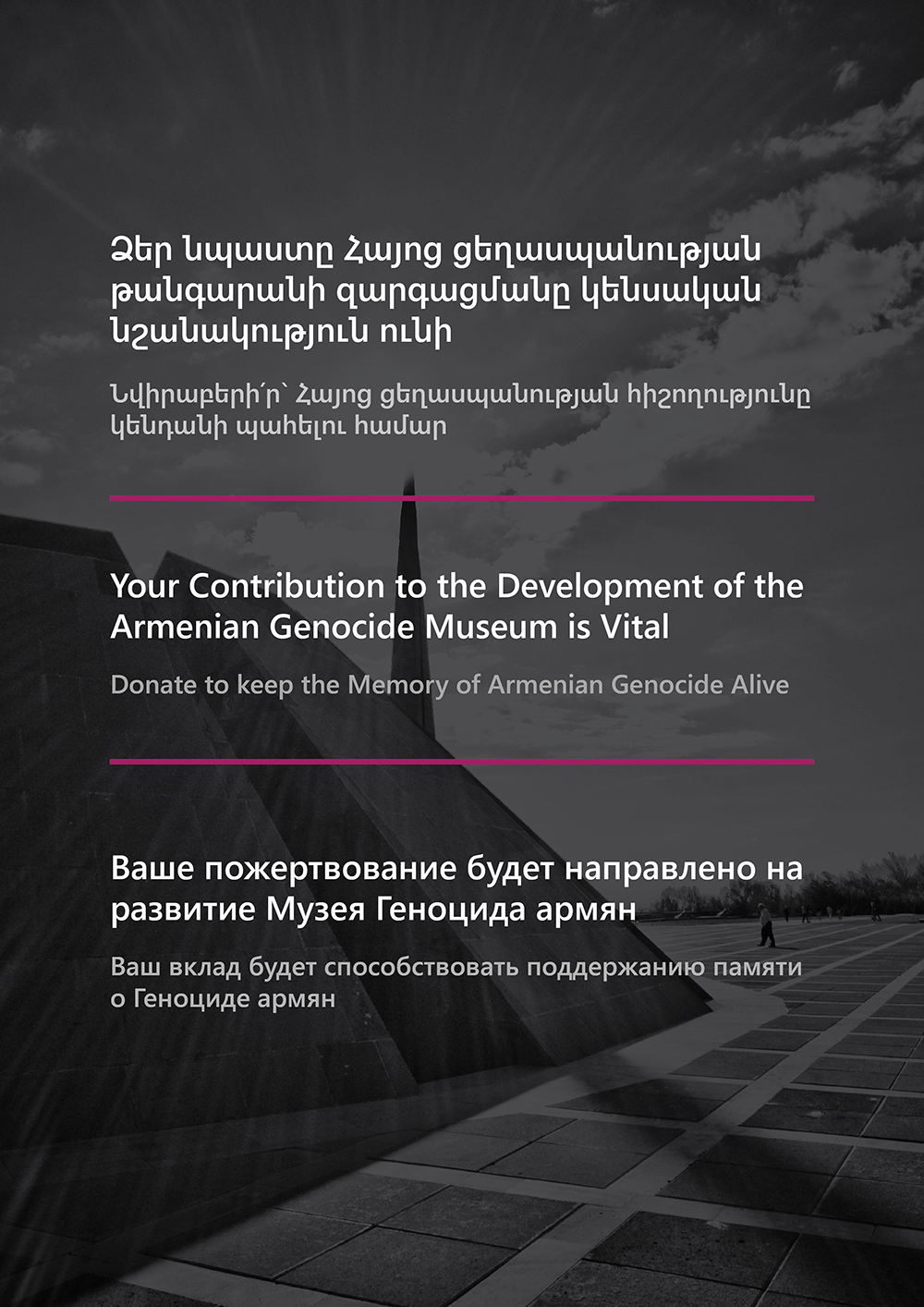
TO KEEP THE MEMORY OF THE ARMENIAN GENOCIDE ALIVE
Special Projects Implemented by the Armenian Genocide Museum-Institute Foundation
|
COPYRIGHT |

|
AGMI BOOKSTORE |

The Armenian Genocide Museum-Institute’s “World of Books”
|
TESTIMONIAL OF ARMENIAN GENOCIDE SURVIVORS |

THE AGMI COLLECTION OF UNPUBLISHED MEMOIRS
|
ONLINE EXHIBITION |

SELF-DEFENSE IN CILICIA DURING THE ARMENIAN GENOCIDE
DEDICATED TO THE CENTENNIAL OF THE SELF-DEFENSE BATTLES OF MARASH, HADJIN, AINTAB
|
LEMKIN SCHOLARSHIP |

AGMI ANNOUNCES 2024
LEMKIN SCHOLARSHIP FOR FOREIGN STUDENTS
|
TRANSFER YOUR MEMORY |
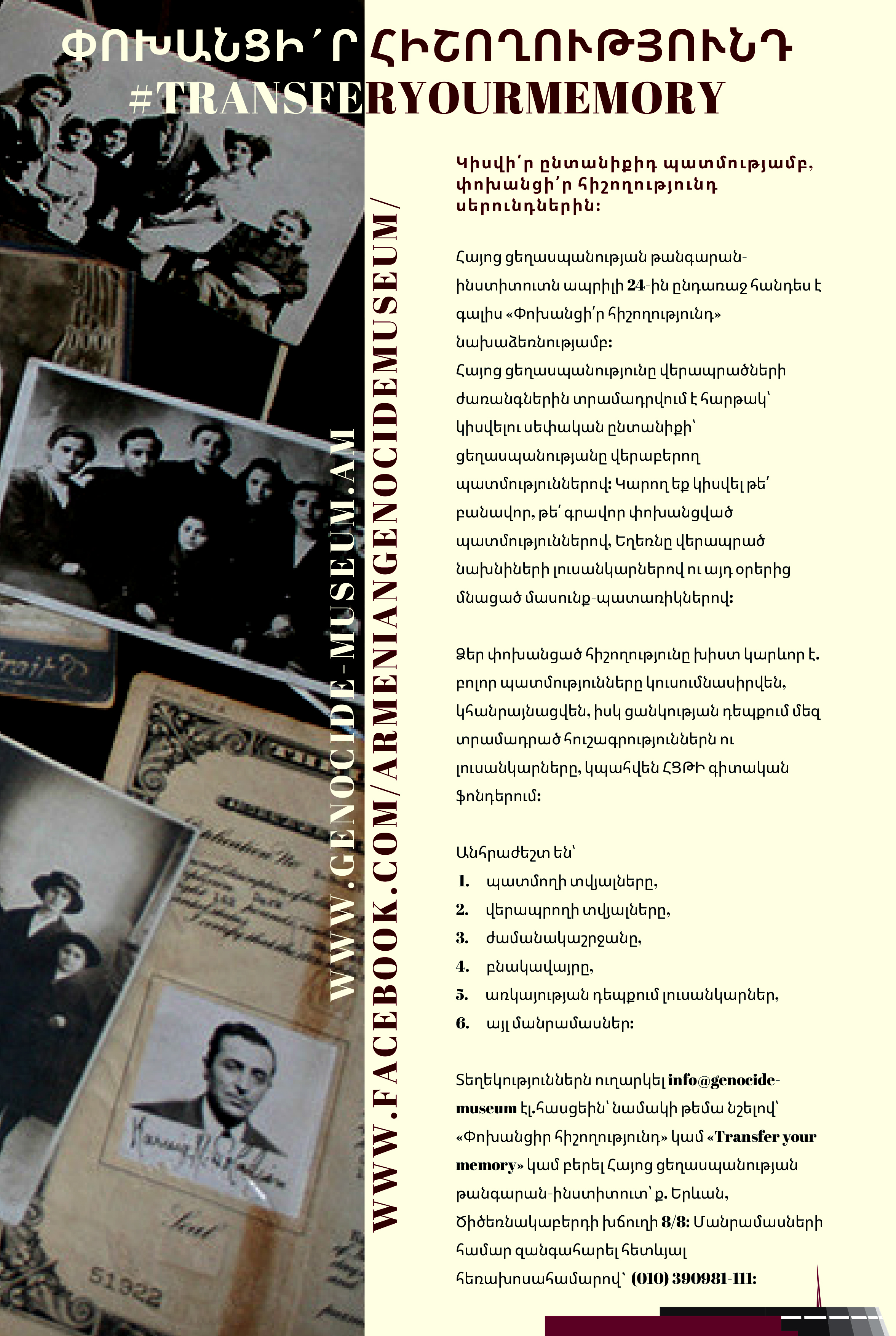
Share your family story,
Transfer your memory to generations.
On the eve of April 24, the Armenian Genocide Museum-Institute undertakes an initiative “transfer your memory”.
|
|





